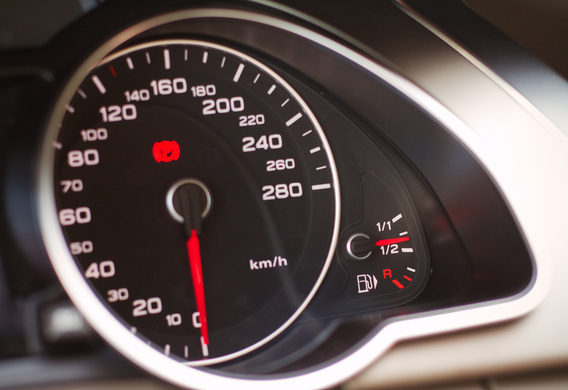
In advertising booklets as well as in the characteristics of the car, the manufacturer indicates the expense of a specific vehicle 100 kilometers of the way. The fuel consumption rate is charged to 100 kilometres of mileage, as the fuel consumption is less than 50 kilometres driven by car warm-up and reduced transmission.
The first way to determine the average fuel consumption is simply to fill the fuel tank with a certain quantity of petrol (or diesel)-for example, 30 or 40 litres. When the fuel is over, the driver will have information about the distance travelled and the amount of petrol that has been spent. It will only calculate the cost by dividing "kilometres" by "litres".
For the second method, it is necessary to fill the full fuel tank, in other words, "under the throat". At the same time, it should be noted the distance on the odometer to the beginning of the measurement and then to use the machine for some time. Given the amount of fuel that has been poured, and noting the distance travelled to the end of the measurement, the tank must be flooded again. This means the on-board log, in which the amount of fuel to be heated is to be noted (measured by measuring jerricans), as well as the date of filling, the odometer measure and, for example, the cost of fuel. The following formula can be used: operating expense = (fuel volume/mileage) * 100. The search result is the number of gallons per 100 kilometers. This is the most accurate way to do so, but requires attention, punctuality and some efforts.
The third mode also involves the maintenance of the ship's log. The car should mark the distance on the odometer when the fuel level indicator of a certain division is reached-for example, half a tank. The ship's log also needs to be able to provide the amount of fuel to be fueled later-this procedure must be performed for a certain period of time. At the end of the measurement, it is necessary to refuel the vehicle so that the fuel level arrow is slightly above the "half tank" position. The driver then needs to be attentive and distance so that the arrow points straight to the ½ tank. Then we should note the distance on the odometer and, knowing the distance travelled and the amount of spent fuel, we can calculate the cost. The advantage of this method before the first is that the driver does not run the risk of being in the middle of a stream without gas and a driven engine. And if you compare it to the second one, this method is slightly simpler and requires fewer records in the ship's log. However, it has a significant drawback-it is the least specific of all the listed fuel levels in the tank.
The vast majority of modern vehicles are equipped with an onboard computer, which allows drivers not to suffer from on-board logs and calculations, and displays the following information: total fuel consumption (in litres per 100 km), instantaneous fuel consumption (also in litres per 100 km during traffic, and, in the case of parking, litres per hour). Range to the next gas station, measured in kilometres, time and average speed on the road. If you want to measure the cost of a car with an onboard computer, you just need to reset the statistics.
So there are several ways to measure the fuel consumption. If the vehicle is old and is not equipped with an onboard computer, the driver may choose between the first method, the risk of being left at some point without gas in the middle of the road, or two others for whom the on-board log must be kept and not forget to make certain data.









